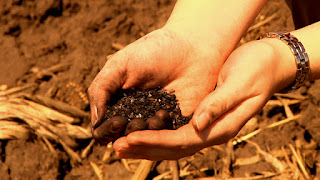Syllabus of Geotechnical Engineering
Geotechnical Engineering
1. Basic Concepts: - Definition of soil and soil mechanics, common soil mechanics problems in Civil Engineering. Principal types of soils. Important properties of very fine soil. Characteristics of main Clay mineral groups. Weight volume relationship and determination of specific gravity from pycnometer test. Field density from sand replacement method and other methods.
2. Index Properties: - Grain size analysis. Stokes’s law and Hydrometer analysis. Consistency and sensitivity of Clay, Atterbeg Limits, Flow Index and Toughness Index. Underlying theory of shrinkage limit determination. Classification of coarse and fine grained soils as per Indian Standard.
3. Compaction: - Definition and object of compaction and concept of O.M.C. and zero Air Void Line. Modified proctor Test. Factors affecting compaction Effect of compaction on soil properties and their discussion. Field compaction methods- their comparison of performance and relativesuitability. Field compacative effort, Field control of compaction by proctor.
4. Consolidation: - Definition and object of consolidation, Difference between compaction and consolidation. Concept of various consolidation characteristics i.e. av, mv and cv, primary and secondary consolidation. Terzaghi's Differential equation and its derivation. Boundary conditions for Terzaghi's solution for one dimensional consolidation concept of cv, tv & U. consolidation test determination of cv from curve fitting methods, consolidation pressure determination. Normally consolidated and over consolidated clays. Causes of over-consolidation. Effect of disturbance on e-Logσ curves of normally consolidated clays, importance of consolidation settlement in the design of structures.
5. Permeability and Seepage: - Concept of effective stress principal, seepage pressure, critical hydraulic gradient and quick sand condition. Capillary phenomenon in soil. Darcy’s Law and its validity, seepage velocity, co-efficient of permeability (k) and its determination in the laboratory. Average permeability of startified soil mass, factors affecting 'k' and brief discussion.
6. Shear Strength: - Stress analysis of a two dimensional stress system by Mohr circle. Concept of pole. Coulomb's law of shear strength coulomb - Mohr strength theory. Relation between principal stesses at failure. Direct, triaxial and unconfined shear strength tests. Triaxial shear tests based on drainage conditions typical strength envelopes for clay obtained from these tests. Derivation of skempton's pore pressure parameters. Stress strain and volume change characteristics of sands.
7. Stability of Slopes: - Slope failure, base failure and toe failure - Swedish circle method - φ=0 analysis and c=0 analysis - friction circle method - Taylor’s stability number - stability charts - sliding block analysis.




Comments
Post a Comment